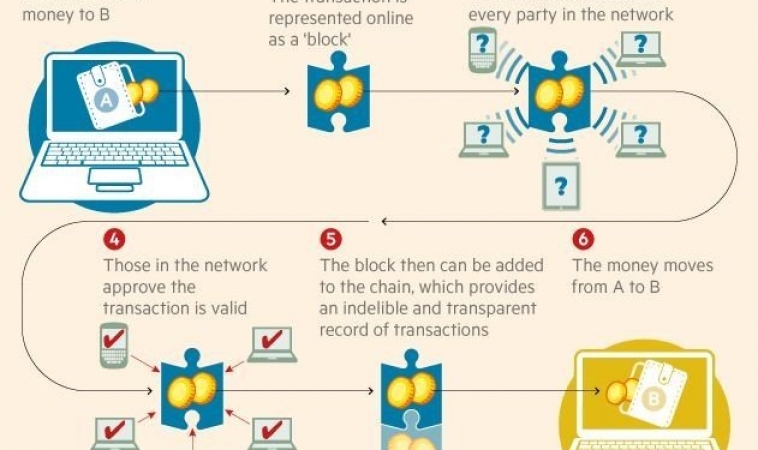
Contents
The 20 Year Banking Race For Blockchain Acceptance
– Blockchain technology has a real cost advantage over commercial and even modern online remittance services.
– Blockchain in remittance payment is briefly explained. Banks are likely to start with permissioned (closed) blockchain before opening up for permissionless (open) blockchain.
– Blockchain are currently in the proof of concept stage for most banks and it take them 10 years to develop blockchain for their bank and another 10 years for widespread acceptance. There are 3 methods for banks to acquire this technology.
– Victims would be young employees working in settlement now and consumers will be the ultimate winners.
– Blockchain is an inevitable technology and once it arrives, there is no turning back and no place for laggards.
Banks are embracing technology like never before. In my previous article, I have introduced the new technology called blockchain. You are advised to read the basics of blockchain here before continuing with this article. In this article, you will see the broad overview of the blockchain impact in banking.
Blockchain Cost Advantage
Let us begin with a simple example. Suppose you would like to transfer money from Singapore to your children in United States. You can do this directly with Citibank and DBS with their traditional remittance service or you can do it through new online technology such as PayPal and Stripe.
Source: WorldBank
According to the WorldBank, the global average cost of remittance had seen a sustained decline. On average, it would have cost you 9.81% in 2008 and this has declined to 7.52% in 2015. In other words, if you have transferred US$200, you will spend $19.62 in 2008 and $15.04 in 2015.
Remember this is the average. The method of remittance would matter too. The WorldBank had calculated that commercial banks like Citibank would cost you 10.64% [actual Citibank fee is SGD$30 minimum] while online platforms like Stripe [actual Stripe fee is 2.9% + $0.30] would cost you 5.43% on average. Online platforms provide remittances that are 49% cheaper than commercial banks due to lower overheads and better usage of technology.
While these online platforms are the leading edge of technology these days, the cost savings of blockchain will put these online platforms to shame.
Source: Blockchain
As seen on the chart above, blockchain will cost you a mere 1.10% for each transaction! For Stripe’s bitcoin blockchain transaction, it is a mere 0.5%.
| Global Average Cost of USD$200 Remittance (2015) | |||
| Method | Commercial Banks | Online Platforms | BlockChain |
| Total Average Cost (%) | 10.64% | 5.43% | 1.10% |
| Total Average Cost ($) | $21.28 | $10.86 | $2.20 |
The table above would give you a good visual comparison of the different cost for each remittance method. This would give you a good idea of why banks are now racing their way into blockchain. Currently we are still in the early stages of commercializing blockchain but its potential to change the financial industry cannot be ignored!
Imagine if Citibank implemented the blockchain technology in 2030 while DBS is still standing still with traditional remittance of 2015. For the same US$200 remittance to the US, if Citibank were to charge you $2.20 for it and DBS were to charge you 10 times more at $21.28, would you still bank with DBS on the account on national pride?
According to Goldman Sachs, there is an estimated $550 billion of annual savings if businesses were to swap legacy payment methods for digital payment.
Blockchain In Banking
Remittance is one of the many forms where blockchain can be used in the financial industry. It is also one of the easier method to illustrate how blockchain technology can be used to facilitate this revolution.
Source: Financial Times
Instead of the current 3-5 working days to remit your money with a commercial banks, this blockchain method of remittance would only take 10 minutes today. This excludes current research efforts underway to make this a real time transfer. This is important because time is money and as the settlement process moves to real time, banks will need to hold less assets as collateral.
As blockchain is a decentralized public ledger system, you will only have to pay the computers in your network in bitcoins to authenticate your remittance. There is very little possibility for fraud as it is time stamped and multiple computers involved simultaneously. Each block cannot be deleted once it is created.
Remittance is a form of permissionless blockchain technology that is opened to the public. This form of blockchain can be extended to settlements, security exchanges and other forms of banking that involves the public.
Source: Financial Times
Permissioned blockchain are then used for the internal functions of the banks such as Fixed Income Currencies and Commodities (FICC) trading. These blockchain would be used internally for the trading, risk management and settlement before it moves out into the open.
Accenture believes that banks and other capital market players will start of with internal permissioned blockchain until they can confident that regulators can police the permissionless blockchain effectively. With these interplay of permissioned and permissionless blockchain, Accenture foresee greater customer experience for consumers.
Source: Accenture
In other words, once blockchain is commercialized, it will make banking cheaper and better. Who can resist these combinations?
20 Year Race To Widespread Acceptance
So the burning question now is when will blockchain be widely accepted? Experts believe that it would come into the mainstream between 2026 to 2036. Blockchain came about with Bitcoin’s Founder Satoshi Nakamoto’s white paper in 2008. Banks took 6 years to come up with the proof of concept in 2014.
They had to first overcome their early skepticism of Bitcoin as there can be no blockchain if they don’t make token payments (can be the leading Bitcoin or other cryptocurrencies) to the computers in their networks. Different banks move at different speed but the early adapters had their experimentation teams in place by 2014.
We are currently in the Proof Of Concept stage and there are many consulting firms are assisting the banks with it. The leading consultancy firms are Accenture and Deloitte. They will study the bank’s existing system and use their expertise of blockchain to advice the banks on the various conceptual possibilities.
For banks that have moved that that stage, they are now developing the relevant technologies to implement blockchain. There are generally 3 methods which banks are using to acquire this technology. Some are using a combination of these methods.
- Internal development
- Investing directly with technology specialist
- Engaging external partners
These developments are expected to take 10 years before it would mature and be implemented into widely by banks. Technology standardization and consumer acceptance would be expected to take another 10 years. The mobile phone came about in 1973 but it took the world 30 years to accept it.
Winners and Losers
Once again, technology is disrupting businesses as we know it. As with all changes, there will be laggards that will be left behind and be swept away by change. Banks will also face the issue of how to deal with their legacy systems in the face of blockchain.
Once the 2 decades are up, banks will have to present the fruits of their labour to consumers. The victims of this race would be young employees who are currently working in settlement and remittance departments. Their jobs are about to be replaced by machines who can do it better and cheaper than them.
This applies to current local operations as well as massive investment in outsourced operations centre in low cost countries like India. These people would age in 20 years and would find it hard to learn new skills.
Consumers will be the ultimate winners as the banks race against each other to implement the blockchain technology.
Conclusion
While blockchain acceptance would take a shorter period in this digital age and probably even shorter time in advanced economy like Singapore, we are still not likely to see it until the next decade.
However blockchain is like a fast moving train that is gathering momentum and once it reaches its station, there is no turning back for the financial industry. After all, would you rather pay $2 for instant remittance or $21 for a 5 day remittance to the US?
This article is contributed by Ong Kai Kiat. He is a professional freelance writer who enjoys the process of discovering and collating new trends and insights for an article. He adds value to society through his articles especially those related to finance and technology. He is reachable at ongkaikiat86@gmail.com
Brought to you by RobustTechHouse. We provide Fintech Development services.
Also published on Medium.













